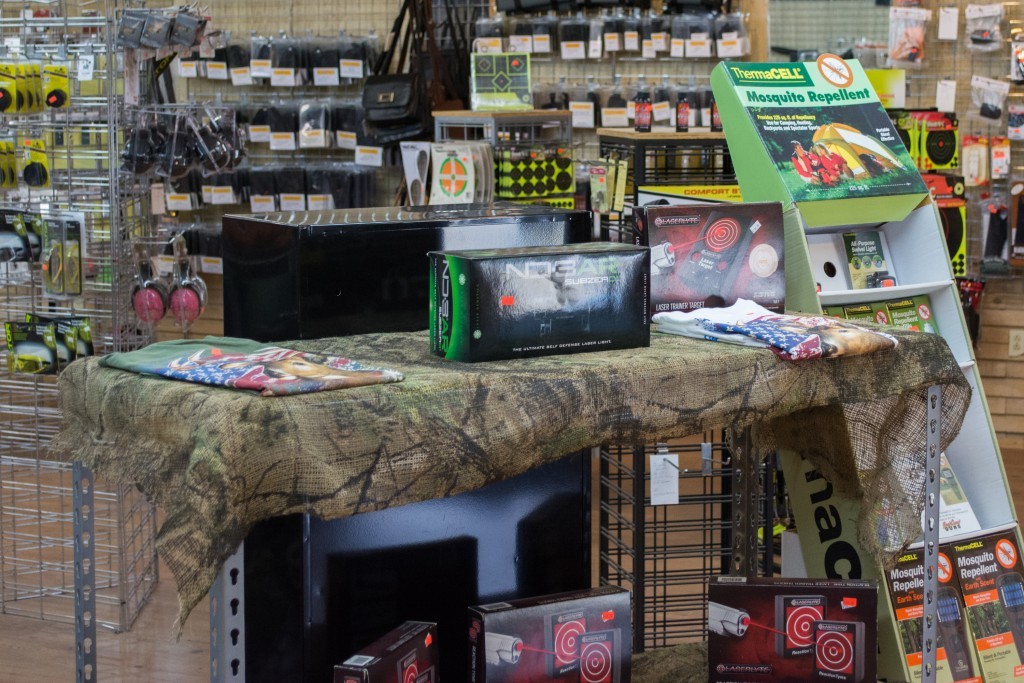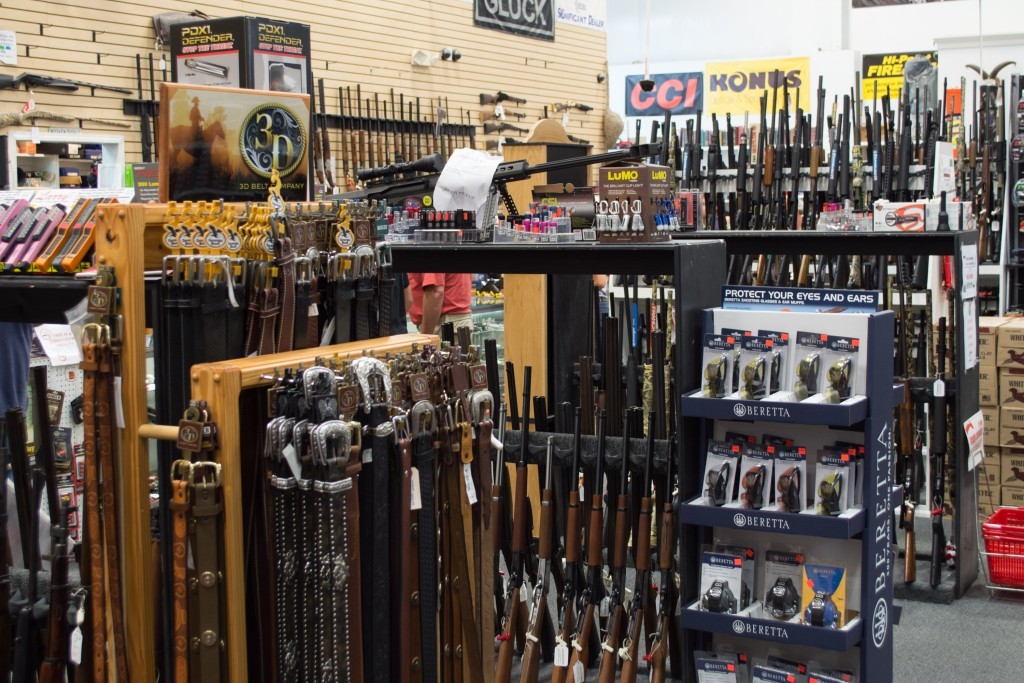Did you ever notice that when you enter a grocery store, and turn right as most people do, you run smack into the bakery? That's to make you hungry before getting to the main part of the store.
Consumer marketing and merchandising is chock full of mysterious secrets. You know, things like subliminal advertising. For example, if you eat a Hershey Bar backward, you’ll develop a powerful urge to buy a Chia Pet.
But seriously, merchandising experts make fascinating observations. Did you know that up to two-thirds of what we buy in grocery stores is unplanned? Pop in to get eggs and milk, and you might leave with that, plus Brown Sugar Cinnamon Pop-Tarts, rib eye steaks that were on sale and spare batteries for the smoke detector.
Observations are interesting, but even more fascinating than the grocery store statistic is the fact that the binge buying behavior is amplified, or even created, but very smart merchandising tactics. Big retail and grocery chains have millions to spend on planogram optimization, the process of arranging the flow and product presentation in their stores to gain every last dollar of sales from each customer visit. Let’s take a look at some of their secrets, that you can use to grow sales in your own store.
Stalk Your Customers
Well, maybe not stalk. But step away from your normal activities once in a while and watch people enter your store. Pay particular attention to their eyes and the direction they travel. You’ll have to filter your results to factor our regulars and those customers on a mission to pick up one or two things in a hurry.
Pay attention to the “just looking” crowd and carefully observe what they look at. I mean this literally. Watch not just their movement through the store, but their eyes. What gets their attention? What sections of the store do they gloss over? Are they “not seeing” important merchandise that feel would warrant more attention?
Moo! Moooooooo!
People are a lot like cattle. Animals tend to follow predictable patterns. So do people. Most people who enter a store will drift to the right once they get in the front door? After the initial right turn, they’ll go NASCAR on you and follow a loose counter-clockwise pattern to navigate your store. I know, right? That’s kind of creepy that we resemble a school of fish. While not a sure thing by any means, you can still take advantage of the right turn trend.
Many grocery stores will put a big table of promoted stuff right in front of the entrance. They know the natural tendency to drift right, so they count on us moving around the table and looking at what’s on it. You might also notice that once you navigate the big table, you’ll turn right and run smack into a section of visually attractive stuff.
Many times, you’ll hit the fresh produce section just after your biologically-induced right turn. That whole section looks great and smells fresh and delicious - perfect for impulse buys and setting a happy mood. Some stores even make the walkways to the right larger to encourage the tendency. Who knew we were this controlled at the local grocery store?
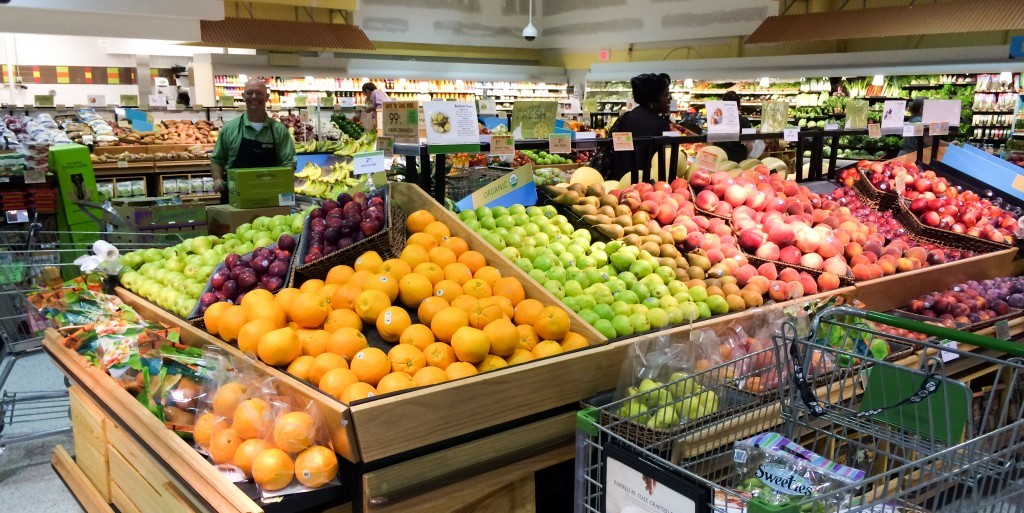
You'll also notice that store floorplans have customers walk through visually appealing areas as they enter — to put them in a buying mood.
Well, seeing that we’re creatures of habit, you might as well take advantage of these types of tendencies. Think about that traffic pattern and decide what interesting products you want prospective customers to see before they’re visually overwhelmed by all the goods in the store. You might as well facilitate the natural tendency and optimize the products they see.
Make Customers Hungry!
When talking about deliberate traffic flow, have you noticed that most grocery stores have their bakery departments near the front of the store? Here’s why. Baking smells delicious. Delicious food smells make us drool, or at least they make us hungry. We all know what happens when we go to a grocery store hungry, right? Yep, we end up coming home with several cases of microwave taquitos. Not wanting to leave your hunger status to chance as you enter a store, the smart ones make you walk by the bakery so you’ll develop an appetite before you hit the aisles.
While it won’t help you to make donuts by the front door, you can still take advantage of this tactic. Think about which of your products have that cool factor, and put a display right near the front door. I’ve seen some retailers put a vertical glass case with unusual antique guns up front. People almost always stop, and after looking over the case contents, they tend to get in the gun buying mood, so to speak.
Open The Window
Window displays are all up and down 5th Avenue for a reason. They work. As a gun store, you have a different set of security issues with window displays, but that doesn’t mean you can’t make use of them.
As I’m sure you’ve seen, lookers and new prospective customers tend to clam up once they enter the store. Whether they need help or not, they’re just as likely to say “no thanks, we’re just looking” when you ask them if they need assistance. People are just naturally resistant to sales approaches. When they’re still outside the store, why not give them the opportunity to see some of your more interesting products at their leisure and without the pressure of a sales associate approaching them? It just might inspire them to look for those products, or better yet, ask questions once they get inside.
You don’t even have to include guns in your window display. Clothes, targets, and other accessories can tell an interesting story on their own. Your windows, if applicable, would be a great place for the story displays we just talked about.
Maintaining a window display will take some effort, but not a lot of cash. You’ve got to keep it fresh and change it up every month or so, or the value will be lost. The design of your window space is an excellent opportunity to steal ideas from the big retailers who spend millions optimizing the effectiveness of their window displays. When out and around town, take note of things like colors, the number of products, and lighting in big store window displays. Concepts with eye appeal apply regardless of the products inside.
Remember, less is more in a window display. Tiffany knows what they’re doing with window display marketing, and you’ll rarely, if ever, find more than a couple of products in their window settings.
Consider Deal Piles
When a new Palmetto State Armory store opened near me I visited frequently just to look around. Do you know the first thing I look at when I walk in? Deal piles. In a couple of areas around the store, they’ll literally stack unopened cases of product in a pile on the floor. On top of the pile, they’ll display the contents of the cases. Usually, it’s ammo. A simple 8.5x11 colored sign identifies the product and special price.
I like this for its subliminal brilliance. The pile of unopened cases implies “special quantity buy at a great price.” The simple signage also indicates quick and informal sale prices, not some normal price. It’s a little bit like the big stacks of soft drink cases on the endcaps in grocery stores, only way more tactical. I can’t help but take notice of these products as I walk around the store.
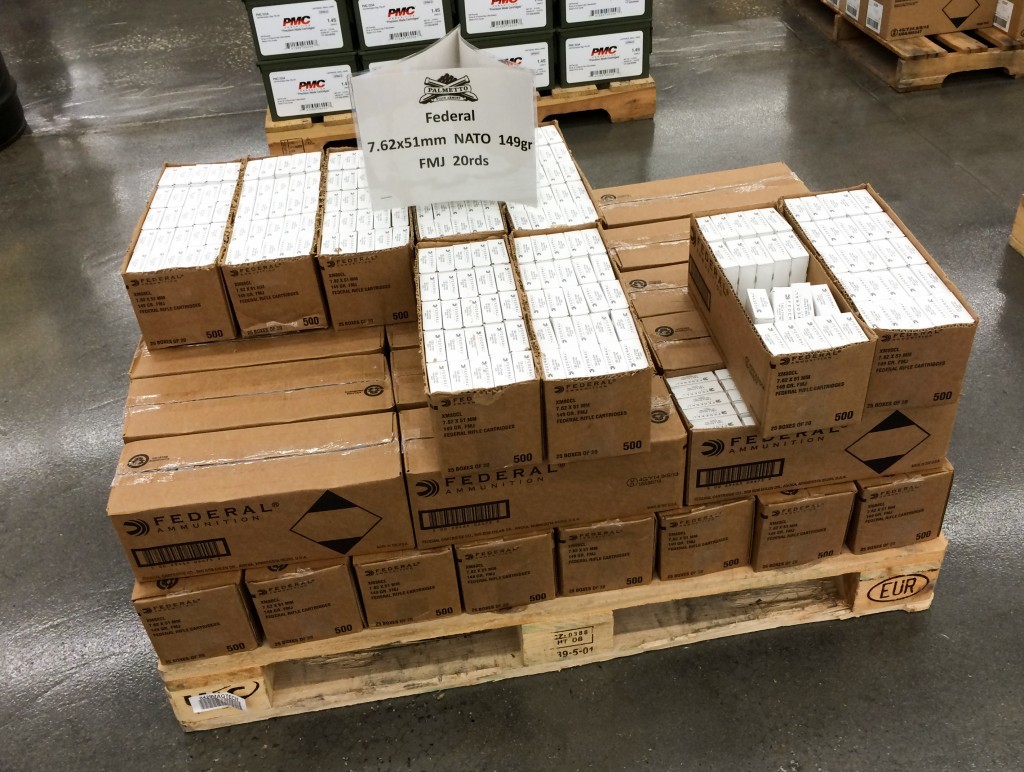
Deal piles are brilliant. Note the shipping pallet on the bottom. The product look like a special buy at a special price. As it's all on the floor, there's urgency to buy.
Make Sure Your Website Is Mobile-Friendly
That’s right. To improve your in-store merchandising success, make sure your website is friendly for in-store traffic. Research indicates that more than 75 perxent of your in-store customers will be looking at stuff online while in your store. They might be checking prices or comparing features and availability of products. Might was well make it easy for them, right? Better yet, offer free Wifi.
Tell A Story
We’ve talked about this idea before, so I’ll be brief here. Rather than just showing a product, find a group of products that communicate a scenario. For example, if you want to sell concealed carry products, consider creating an “Every Day Carry” display. Choose your most popular example products, or those that you personally recommend. Include products like a knife, flashlight, gun, holster, magazine carrier, belt, lasergrips and whatever else you might recommend.
Put a nice sign on the display and call it “Our Recommended Every Day Carry Gear.” The idea is to get your shopper to pause and evaluate the display. It’s also a great conversation starter that will help your sales associates begin a meaningful dialogue with those folks that are “just looking.”
Make Them Walk
There’s another great grocery store tactic that you might consider. Have you noticed how staple products like milk and eggs are always in the back of the store? That’s not for their convenience. Those departments are strategically placed so that you have to walk by all sorts of yummy things to get the product you originally came for. It’s another one of the reasons that two-thirds of what we buy in grocery stores is unplanned.
While customers aren’t going to gun stores for daily food staples, there’s no reason you can’t benefit from a similar strategy. There’s nothing wrong with arranging your floor space so that customers have to walk by other things to get from the front door, to your highest volume product, and then to the cash register. By clever floor layout, have them walk by some interesting stuff to get to the ammo aisle.
Nooks And Crannies
While we’re talking about people tendencies, here’s another. We like to explore places. Many of us are just drawn into dead end areas that are packed with who knows what. Something about our curious nature makes us want to find out what on earth is in there. Of course, you have to be careful about what you stock in any dead end areas as you don’t want to make life any easier for shoplifters. Larger and less expensive items might be the best approach for unusual spaces you have in your store.
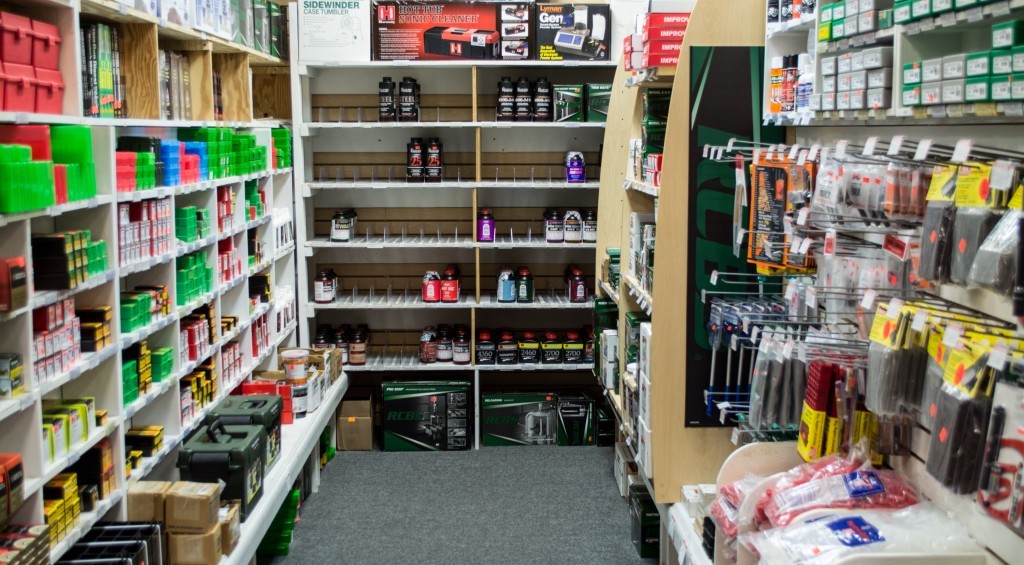
This retailer uses natural dead ends in the store layout. Reloading gear is a perfect product for nooks and crannies shoppers.
Be The Customer!
Before just sticking a product on the shelf, stop to consider what you want the customer to perceive when they see a product displayed. What feeling do you want that customer to have? What feeling or emotion is likely to encourage them to buy a product? We rarely stop to think about the important details like this. Having a plan for your desired customer response is the very first step to organizing the interior of your store.
Create A Focal Point
Make it easy for customers to identify individual products or groups by being deliberate about focal points. You’ll notice that high-end retailers like department stores always have an obvious focal point in their displays. If there are three mannequins highlighting clothing, you’ll most likely see one that stands out by being in front, angled differently, or that’s highlighted with a spotlight. A planned focal point helps bring the eye and brain into the story gradually, so your intended message is clear and the desired products are recognized.
Prop Up Your Products
Use of props in a display case is not just about being creative and artsy. Additional props help people see what you have to offer. They can be used to communicate a scenario, story or relationship between products in the customer’s mind. For example, old wooden surplus ammo crates make great shelves and also communicate a subliminal message. Consider making a floor display for special purchase ammo. Make irregular piles of crates and display product and pricing at different heights and depths.
Props also serve the purpose of helping the eye and brain process an avalanche of information. While you’re familiar with the products and your shelves, can can easily discern what’s there, a first-time browser in your store can see so much that they are able to process nothing. Have you ever looked at a wall of product in the grocery store, seeking a specific package and had trouble seeing it through the clutter? The same principle can apply on your shelves or displays. Use of props can give the eye a break and create some space to highlight specific products.
Move Stuff Around!
Shuffling the arrangement of your stock on a regular basis is a great way to “re-highlight” forgotten products. Customers love to see the moving commotion. There’s something about our natural curious nature that makes us want to see what’s going on, thereby causing a fresh look at your products. So, by all means, do your floor move activity during store hours.
Besides, it’s a great way to get some automatic spring cleaning accomplished. You can’t help but clean those dusty products that have been hidden in a corner the past few months. An occasional shuffle also helps keep your staff in tune with all the products you carry. Like customers, they tend to stop seeing everything too after too much exposure.
Go Into The Light!
A well-lit store is nice. You want customers to be able to see the details of your products and be able to read the print on packaging. Having a deliberately-lit store is even better. We’ve talked about telling stories and creating focus already. Deliberate lighting can be a great way to support those efforts. Small directional spotlights are inexpensive and easy to install. Even simple track lighting can be used to highlight certain areas, displays or products. Next time you wander through a department store, take note of the attention paid to deliberate lighting.
Put Complementary Products Together
Our natural sense of organization encourages us to do things like put all the guns together, all the ammo in one aisle and the holsters in another. I absolutely get all the reasons to do that and agree with them. After all, you don’t want customers to have to look for 9mm self-defense ammo in six different areas of the store.
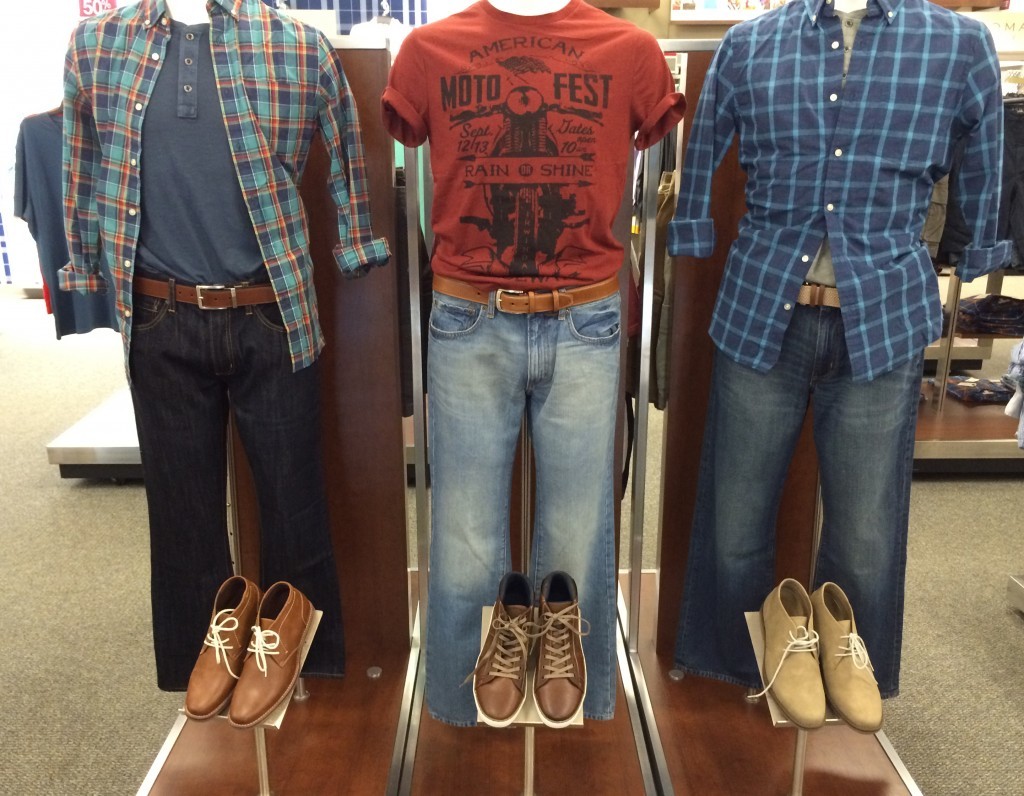
The merchandiser puts complementary products together to make it easier for customers to buy related sets of product. Note how the center mannequin uses color to create a focal point.
However, that doesn’t preclude your ability to accentuate related product displays. In a clothing store, retailers put a shirt, tie, jacket, pants, belt and shoes on a display mannequin even through all of those items are stocked in different areas. They want customers to see the complete picture of how complimentary work together in hopes of selling multiple products from one display.
In a previous article, we talked about doing things like adding a couple of Lasergrips to your pistol display case, so customers can easily see the relationship. You might also add a few boxes of your preferred self-defense ammunition in the gun case. There’s nothing wrong with displaying some extra samples of products in strategic locations.
For example, you don’t have to remove that ammo from its primary home in the ammo department. If you’re concerned about shoplifting of safety issues of putting complimentary products together, just use empty boxes as display props. That will still spark customer interest and perhaps facilitate conversation between your staff and the shopper.
Give your customers A Break!
We all tire of shopping. You can do your part to keep attention levels of your customers fresh by creating breaks. Long aisles of similar product are convenient for your and your customers. We expect to find all products in a category in the same place.
But the eye, and attention span, quickly deteriorates as we gaze at hundreds of products in a row. The best (or worst) example I’ve seen in gun stores is the ammunition aisles. It’s not uncommon to walk down a 30 to 50-foot long aisle completely filled with boxes of ammunition. How about breaking the monotony every few feet and sticking some related products like targets in there?
Too much stuff without visual breaks can make it hard for customers to see the products you want to sell.
Retail stores are very deliberate about what products are on what shelf. Shelves at or near eye level height generally are stocked with the best-selling products and big name brands. Upper shelves often feature boutique, or higher margin products.
Most retailers put their bulk price and lower margin products down low near the floor. That’s because people tend to choose what they see most easily. Make sure you aren’t making it too tempting for customers to buy your lowest margin products! Put those below the sight line, and the brands you want to promote and sell near eye level. Remember, eye level is buy level.
Retailers have been working on the art and science of buying behavior and optimizing store displays since the beginning of trade. The good news is that learning from the big boys who spend millions on this stuff is easy. Just visit their stores and see how they do it.

